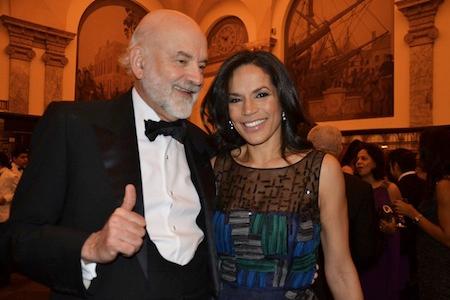Are Boutiques Replacing the Bulge Bracket as Most Prestigious on the Street?
Published: Jul 23, 2014

Long before the subprime mortgage-backed securities hit the fan, a handful of relatively small investment banking firms, often referred to as boutiques, regularly competed with the likes of Goldman Sachs and Morgan Stanley for talent. There was Stephen Schwarzman’s Blackstone Group, perhaps best known for its private equity offerings, although for decades its advisory unit has been well known for winning big deals and recruiting top-tier talent from top-tier schools. There was Lazard, now larger than boutique size, employing nearly 2,500 people, and a public firm at that, but not long ago Lazard was a small, private shop known for its blue-blooded employees, blue-chip client list, and huge M&A deals. And there was Greenhill, the self-described “unique” investment bank, founded in the middle of the ‘90s by former big swinging bankers from Smith Barney and Morgan Stanley; Greenhill, like Lazard, also went public, but unlike Lazard it’s remained relatively small and boutique-y, employing just over 300 bankers, who work on deals just as large as the giant, full-service investment banks of Wall Street.
As for those giants (Goldman, Morgan Stanley, J.P. Morgan, Credit Suisse, etc., which, unlike boutiques, underwrite securities and provide loans in addition to advising clients on M&A deals and other transactions), they had quite a PR disaster in 2007 and 2008, a disaster they’re still feeling to this day (thanks in part to not only crisis-related transgressions but post-crisis-related transgressions as well; here’s the latest big-bank dirty deed). And along with public disdain, these firms have had to deal with job-candidate aversion. That is, after losing prestige in the wake of their reputations becoming tarnished, the giants of Wall Street have had to deal with the fact that smaller investment banking firms—which have stayed out of scandalous headlines and stayed out of layoff headlines, while winning business away from the giants—have become even more attractive employment options to would-be Wall Streeters. And along with the likes of Blackstone, Lazard, and Greenhill, now there are other boutiques in the mix such as Centerview Partners, Perella Weinberg Partners, and Moelis & Co., all of which are inching closer to their 10-year anniversaries (Centerview and PWP were founded in 2006; Moelis was founded in 2007). In the meantime, the boutiques new and old continue to steal away more of America’s brightest financial minds (or, at least, more of America’s most financially-minded) from the giants of the Street.
In fact, today, for a financial-market-interested graduate from a so-called Wall Street target school (the Ivies, Duke, NYU, UVA, Michigan, Northwestern, Chicago, etc.), it’s no longer an easy decision between an offer from Goldman and an offer from, say, Centerview. The reason for this is while Goldman’s name might still carry unmatched prestige among global investment banks (and has a name and reputation known throughout nearly every corner of the world), Centerview has been making a ton of noise in the M&A market and among the top dealmakers on the Street as of late, and a job with Centerview could possibly mean an overall better experience than one at a leading bulge bracket bank.
Consider these pluses: (1) more experience on high profile deals (Centerview typically has its hands in some of the largest deals in M&A; it’s currently advising Time Warner on its proposed $70 billion merger with Comcast); (2) more interaction with senior bankers and clients (smaller firm = smaller deal teams = equals more responsibility; and smaller firm also usually = better mentoring options); (3) higher compensation (Centerview is well known as being the best paying bank on the Street, and, typically, boutiques pay better than the giants); and (4) faster promotions and help in finding strong exit opportunities (Centerview, and a few other boutiques, encourage young analysts to stay on with the firm rather than put in their two years and head to a hedge fund or PE firm or other buy-side institution; and even the boutiques that do have so-called two-and-out programs often will help place their analysts with hedge funds and PE firms, which is not common practice at bulge bracket firms).
However, there is one aspect of working at a boutique that isn’t much different than working at a bulge bracket bank: the hours. Indeed, nearly across the board, Wall Street giants, Wall Street boutiques, and Wall Street mid-market banks work their young talent hard. So hard that recently one boutique (Perella Weinberg) followed Goldman’s lead and is now protecting a weekend day for analysts (a protected day is one on which analysts are not allowed to work) in hopes of lightening the heavy workload. Although it's unclear if this initiative will prove to be effective (some senior bankers have expressed their disapproval of the arrangement), what is clear is that larger no longer automatically means better on the street called Wall.
In any case, for all the latest inside information on the giants of Wall Street, the boutiques, and mid-market firms, check back here on September 3, when we’ll be releasing the new Vault Banking 50 (last year, Blackstone ranked #1, while Centerview, Greenhill, and Perella Weinberg ranked #7, #8, and #9, respectively), the new Banking Prestige Rankings (last year, Goldman ranked #1, Greenhill rose one place to #9, Moelis rose three spots to #13, Perella Weinberg rose one spot to #12, and Centerview rose 10 places to #16), and all the results of our 2014 Banking Survey, in which we asked thousands of investment banking professionals to tell us about life at their firms.
Follow me @VaultFinance.
Read More:
22 Strange But True Interview Questions That Wall Street Firms Ask
Prestige, Money, or Google Didn’t Hire Me: Why Do Ivy League Grads Really Work on Wall Street?
Why Goldman Sachs’ New Saturdays-Off Policy Won't Work